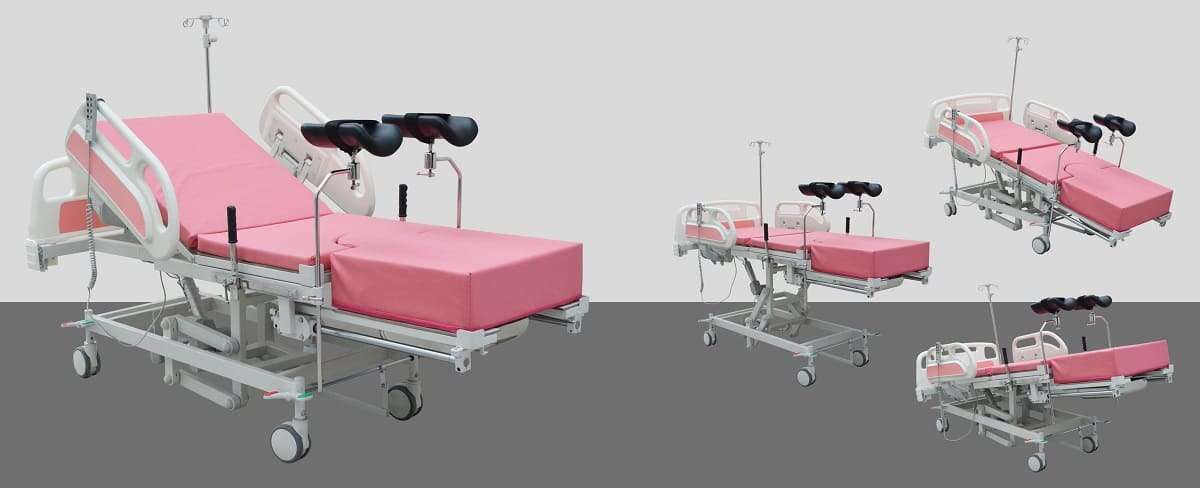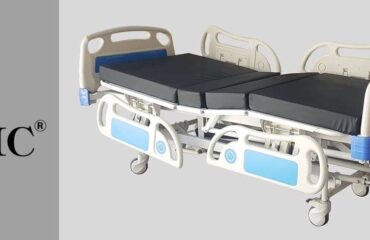Motorized ICU beds are specialized hospital beds equipped with motorized features that allow for precise adjustment of the bed’s position and functions. These beds are primarily used in intensive care units (ICUs) to provide critical care to patients who are seriously ill or injured. Motorized ICU beds offer several advantages over traditional manual hospital beds, including enhanced patient comfort, improved caregiver ergonomics, and advanced therapeutic support.

Motorized ICU beds play a crucial role in critical care settings for several reasons:
Patient Mobility:
Motorized ICU beds allow for easier and safer patient mobility within the intensive care unit. Patients who are critically ill often require frequent position changes to prevent complications such as pressure ulcers and respiratory issues. Motorized beds enable nurses and caregivers to adjust the bed’s position with minimal physical strain, facilitating patient care.
Monitoring Integration:
Many motorized ICU beds are equipped with integrated monitoring systems that allow healthcare providers to monitor vital signs, such as heart rate, blood pressure, and oxygen saturation, without disturbing the patient. This integration enhances patient safety and enables prompt intervention if any abnormalities are detected.
Therapeutic Support:
Motorized ICU beds often come with features such as adjustable height, backrest, and leg elevation, which can aid in providing therapeutic support tailored to the patient’s needs. For example, raising the head of the bed can help improve respiratory function in patients with respiratory distress, while elevating the legs can aid in reducing swelling and improving circulation.
Enhanced Patient Comfort:
Critical care patients may spend extended periods in bed, making comfort essential for their overall well-being and recovery. Motorized ICU beds typically offer features such as foam mattresses, adjustable firmness settings, and built-in patient positioning aids to enhance comfort and promote restorative sleep.
Facilitation of Procedures:
Motorized ICU beds provide a stable and adjustable platform for performing various medical procedures, such as intubation, suctioning, and wound care. The ability to precisely position patients during these procedures can improve their safety and efficacy while minimizing discomfort.
Safety Features:
Modern motorized ICU beds are equipped with safety features such as siderails, brake systems, and patient alarms to prevent falls and other adverse events. These features are particularly important for critically ill patients who may be at increased risk of injury due to altered mental status or mobility limitations.
Overall, motorized ICU beds play a multifaceted role in critical care by enhancing patient mobility, facilitating monitoring and therapeutic interventions, promoting comfort, and ensuring safety. Their integration into intensive care units has become standard practice, contributing to improved patient outcomes and quality of care.
Types of motorized ICU beds
Motorized ICU beds come in various types, each with specific features and functionalities tailored to meet the diverse needs of critically ill patients. Here are some common types:
Basic Motorized ICU Beds:
These beds typically offer essential motorized functions such as adjustable height, backrest, and leg elevation. They provide the foundational features needed for patient comfort and mobility within the intensive care unit.
Advanced Therapeutic Beds:
Advanced motorized ICU beds are equipped with additional therapeutic features to support patients with specific medical needs. This may include features such as alternating pressure air mattresses for pressure ulcer prevention, lateral rotation for pulmonary therapy, and percussion/vibration for secretion clearance.
Bariatric ICU Beds:
Bariatric motorized ICU beds are designed to accommodate larger patients with obesity or morbid obesity. These beds have higher weight capacities and wider dimensions to provide adequate support and comfort for bariatric patients while ensuring safe patient handling and mobility.
Critical Care Transport Beds:
Motorized ICU beds designed for critical care transport are equipped with features to facilitate safe and efficient patient transfer between different healthcare facilities or within the hospital. These beds may have collapsible siderails, integrated stretcher systems, and compatibility with ambulance or aircraft transport systems.
Specialized Pediatric ICU Beds:
Pediatric motorized ICU beds are specifically designed to meet the unique needs of pediatric patients, including infants and children. These beds feature adjustable sizing, pediatric-friendly safety features, and integration with monitoring systems optimized for pediatric care.
Hybrid ICU Beds:
Hybrid motorized ICU beds combine the features of a traditional hospital bed with those of an intensive care unit bed. They offer advanced functionalities such as integrated patient monitoring, electronic medical record integration, and compatibility with advanced therapeutic support surfaces.
ICU Beds with Imaging Compatibility:
Some motorized ICU beds are designed for use in imaging environments such as MRI or CT scanners. These beds are constructed with non-magnetic materials and have features that allow patients to be safely transported and positioned within the imaging equipment while receiving critical care.
Each type of motorized ICU bed serves a specific purpose and is designed to address the unique requirements of patients in critical care settings. Healthcare facilities may choose the type of hospital bed that best aligns with their patient population, clinical needs, and budgetary considerations.

